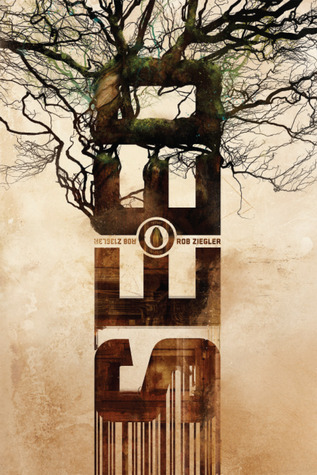About a century from now, climate change has caused a new Dust Bowl in the Corn Belt, resulting in major famine across the United States. Most of the surviving population leads a nomadic existence, migrating across the ravaged landscape in search of habitable, arable land. Decades of war, resource depletion and population decline have left the government practically powerless. Gangs and warlords rule the land.
The only thing staving off full-blown starvation is Satori, a hive-like living city that produces genetically engineered drought-tolerant seed. Its population is a mix of transhuman Designers, Advocate warriors and “landrace” Laborers. When one of Satori’s Designers leaves the fold and goes rogue, the desperate U.S. government sends the ex-military Secret Service Agent Sienna Doss to track her down.
Seed follows three separate but connected plots. Brood, Hondo and Pollo are starving migrants trying to make ends meet in the parched America heartland. Through them, the readers gets a look at what life’s like for common people in this horrible, gang-dominated future. On the other end of the spectrum are Pihadassa, the Satori Designer who strikes out on her own, and her former partner Sumedha who remains in Satori. They can see and manipulate DNA helices, both of the gengineered seed Satori provides and of the people and clones around them. The third point of view comes from Sienna Doss, the no-nonsense agent tasked with tracking down the missing Designer. Seed smoothly switches back and forth between these three perspectives, and in the process paints a compelling picture of a ravaged country and of the forces that would control it.
What’s interesting about Seed are the huge differences in tone between the three plots. The story of Brood, Hondo and Pollo is grim and violent. They lead desperate lives, navigating the land between gangs and desperate, nomadic families, scavenging to make ends meet. Their chapters have a post-apocalyptic, almost Mad Max-like tone. By contrast, the sections set in Satori have a futuristic, post-human flavor. The Satori Designers are eerie creatures, manipulating human beings like science experiments or breeding stock, helped by their drone-like landraces and protected by the terrifying, inhuman Advocates. And finally, the Sienna Doss chapters feel like solid military SF, with Sienna taking the lead as the complex, kick-ass heroine who moves heaven and earth to achieve her mission objective and recapture the rogue Designer.
The way Rob Ziegler manages to weave these three highly disparate stories into one cohesive narrative is impressive. He confidently writes in all three modes, as different as they are, and gradually brings the plots together into a spectacular resolution. It’s hard enough to write a good post-apocalyptic story, or a transhuman/bioengineering one, or a military SF one, but to write all three and weave them together into one captivating plot is simply amazing—especially for a debut author.
The resulting novel is a real page-turner filled with interesting characters and pulse-raising action scenes. It offers both the grit of a post-apocalyptic survival story and the mystery of the Satori composite clones. The pace is full speed ahead right from the start and doesn’t let up until the end, but Ziegler infuses enough character depth and genuine emotion into the story to make it much more than just another action-packed SF adventure.
Night Shade Books seems to have made it its mission to produce great, dark science fiction debuts on a regular basis—The Windup Girl by Paolo Bacigalupi, Necropolis by Michael Dempsey, God’s War by Kameron Hurley and Soft Apocalypse by Will Macintosh, just to name the ones I’ve read in the last twelve months or so. To that list we can now add Rob Ziegler’s excellent debut Seed, one of the best SF novels I’ve read so far this year.
Stefan Raets reads and reviews science fiction and fantasy whenever he isn’t distracted by less important things like eating and sleeping. Many of his reviews can be found at Fantasy Literature.










